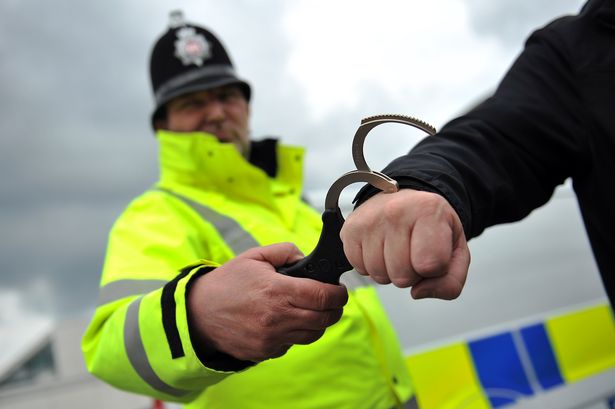Crime rates are falling – but here are the areas of the region with the most crimes recorded
19:43, 28 Jul 2025Updated 19:43, 28 Jul 2025
 These areas top the crime rates in the region (Image: Manchester Evening News)
These areas top the crime rates in the region (Image: Manchester Evening News)
Crime is falling but Manchester is still one of the most dangerous places to live according to new Home Office figures. According to the statistics, one in every seven people falling victim to crime in the last year.
In the year ending March 2025, more than 5.3 million non-fraud crimes were recorded by the 43 domestic police forces in England and Wales. That was about 92,000 fewer crimes than in the year ending March 2024, a 2% fall.
In Greater Manchester, there were 319,131 non-fraud crimes in the year ending March 2025, which was around 24,000 fewer than the previous year, a 7% drop.
Crime rates, the number of crimes recorded in each area for every 1,000 people, show that Manchester is currently the most dangerous place to live in Greater Manchester.
These figures allow for a fairer comparison of the threats to law and order in places with widely different population sizes.
Last year, Greater Manchester Police recorded 86,696 non-fraud crimes in Manchester. While that was an 8% fall from the previous year, it still added up to a crime rate of 152 offences for every 1,000 people.
That’s the highest crime rate in Greater Manchester, third highest in the North of England, and the 6th highest of more than 300 community safety partnership areas in England and Wales, which are broadly similar to council areas.
It’s also the equivalent of one in every seven people who live in Manchester falling victim to a crime last year.
After Manchester, Rochdale has the highest crime rate (113 crimes per 1,000 people), followed by Oldham (113), and Salford (110).
Using our interactive map, you can check the crime rate where you live, whether crime is rising or falling, and how it compares nationally.
Separate figures from the ONS Crime Survey for England and Wales suggest people aged 16 and over experienced 9.4 million incidents of crime in the year to March 2025, up from 8.8 million in the previous 12 months.
The rise is mainly due to a 31% rise in fraud, which accounts for 4.2 million incidents and is the highest estimate for this type of crime since fraud was first measured in the survey in 2016/17.
The overall total of 9.4 million incidents in 2024/25 is 16% lower than the total of 11.2 million for 2016/17, however.This annual poll, based on face-to-face interviews, seeks to measure the amount and impact of crime, including offences which may not have been reported to police.
The survey covers a range of personal and household victim-based crime, including theft, robbery, criminal damage, fraud, computer misuse and violence with or without injury, but does not include sexual offences, stalking, harassment and domestic abuse, which are presented separately.
Experiences of theft, criminal damage and violence with or without injury, as measured by the ONS survey, have been on a broad downwards trend since the mid-1990s.
